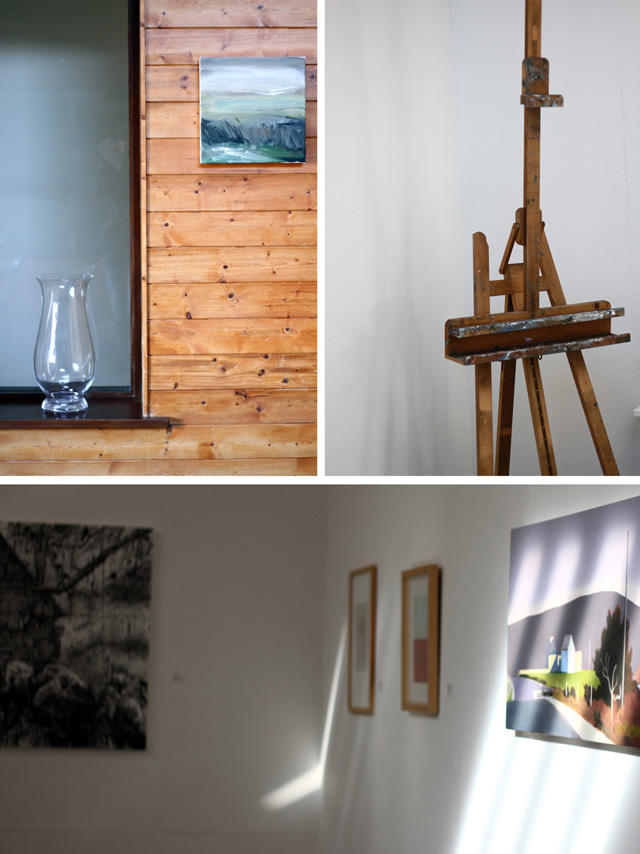From Killala to Belmullet
"There was a most ingenious architect, who had contrived a new method for building houses, by beginning with the roof and ending with the foundation" (Swift)
Being a child in Ireland must be special, just lying down on the grass and looking up to the sky, you can spend hours making shapes out of the clouds. There the clouds change constantly: their contours, their colour, their size, even their emotion. It happens in a second. And they’ll travel with you, on a journey that’s as varied as the clouds.

The Irish sky is forever changing its appearance in a bid to be noticed, fully aware that the ground below is filled with numerous distractions. From Belleek Castle (near Ballina), where lies the famous baronet buried with his horse, heading northwest through Killala, as if on a journey through the ages, following an unpredictable timeline. In the space of a few kilometers you’ll first come across a dolmen tomb dating back more than 5000 years, then the ruins of the Rathfran Abbey, built in the late thirteenth century, and finally one of the so- called Ogham stones, stones from the Celtic period engraved in a primitive form of Irish writing. It’s as if opening and closing a window, each time facing a different moment in the history of a place.

It’s the Irish people’s awareness of their origins and their deep connection with nature that is at the very heart of the Tír Saíle Sculpture Trail, a project that has enhanced fourteen coastal spots north of Mayo with its many sculptures created by various contemporary artists. A combination of water, soil and wind, the sculptures seem almost to expose themselves to the power of the sky in future testimony of a period, as happened with the dolmen and the abbeys.

But perhaps the most evocative sculpture is that of nature itself: at the legendary Downpatrick Head, a huge sea stack (known as Dun Brist, "broken fort") detached from the coast due to marine erosion and is standing tens of meters from the mainland. It’s as though it’s permanently on the verge of setting sail, like a child unable to leave his mother’s embrace. Bunatrahir Bay, which opens at its side and is a refuge for many species of wild birds, almost seems to want to console it with its triumph of colors and sounds.

It must be these very colours that continue to inspire guests of the Ballinglen Arts Foundation in Ballycastle, a small place but one that holds great treasure. For years, the foundation has offered artists the opportunity to spend time in the small town in exchange for a piece of their work realized during their stay. In this way, the artists become the changing clouds, each adding a different aspect to the landscape. There's so much beauty to behold that even a rainbow arching over a field of daffodils becomes an everyday event.

Not far from Ballycastle are the Céide Fields: the remains of a megalithic village that time had hidden under layers of soft peat and is even older than the pyramids. To uncover the ruins, it was sufficient just to insert probes into the ground, without the need to dig or destroy anything. You can’t fail to agree that the Irish greatly resemble the earth on which they live: their appearance is rough and ready, their amenability hiding their solid grounding, easily reachable, without corrupting the integrity.

But this doesn’t mean that the future isn’t knocking at their door. Before arriving at Belmullet, also home to the twenty-seventh golf course in the world and where SEAI (Sustainable Energy Authority of Ireland) is experimenting into using waves and tides as a means of producing energy, we must make a detour to the Ballycroy National Park, an extremely modern, educational natural park which will take you on a journey of discovery of wildlife in its natural bog habitat. After all, it’s the detours that make a trip special. Such as the last one to Tiraun Point, from where you can see Inishkea, an abandoned island, on the tip of which stands the Blacksod lighthouse, a constant security on a sky that changes with each step we take.

DAY 1 < - > DAY 3
Western Ireland | Mayo | People | Credits & Links